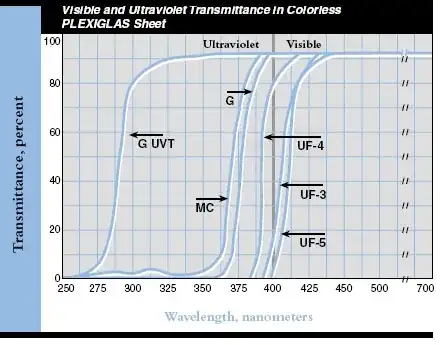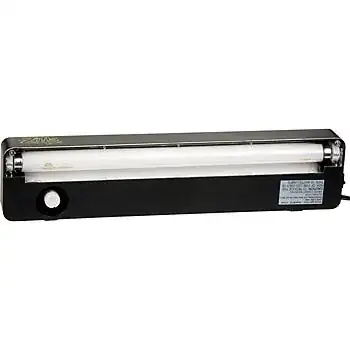UV-B radiation is from about 280nm to 320nm (or 315nm depending on the reference that you use), and is subject to attenuation (and scattering) far more than the longer wavelength UV-A. As you more than likely know, there are different types of plexiglass.
The chart below compares the UV-Visible transmission properties of different types of plexiglass, taken from the blog entry Infrared and Ultraviolet Transmission in Plexiglass Acrylic and Makrolon Polycarbonate Sheet and the image is originally from Plexiglas information sheet (Altuglas Group):

According to the blog, the curve labelled 'MC' is your general purpose plexiglass. A key thing to note is the precipitous drop in transmittance (hence, increase in attenuation) in the high UV-A values. The transmittance values in the UV-B area are extremely low, so much so that even a thin piece of general purpose plexiglass would result in over 95% attenuation.
The type labelled G UVT (UV Transmitting) has impressive transmittance (low attenuation) in the UV-B, but this is a specialised product and is considerably more expensive than the standard.

